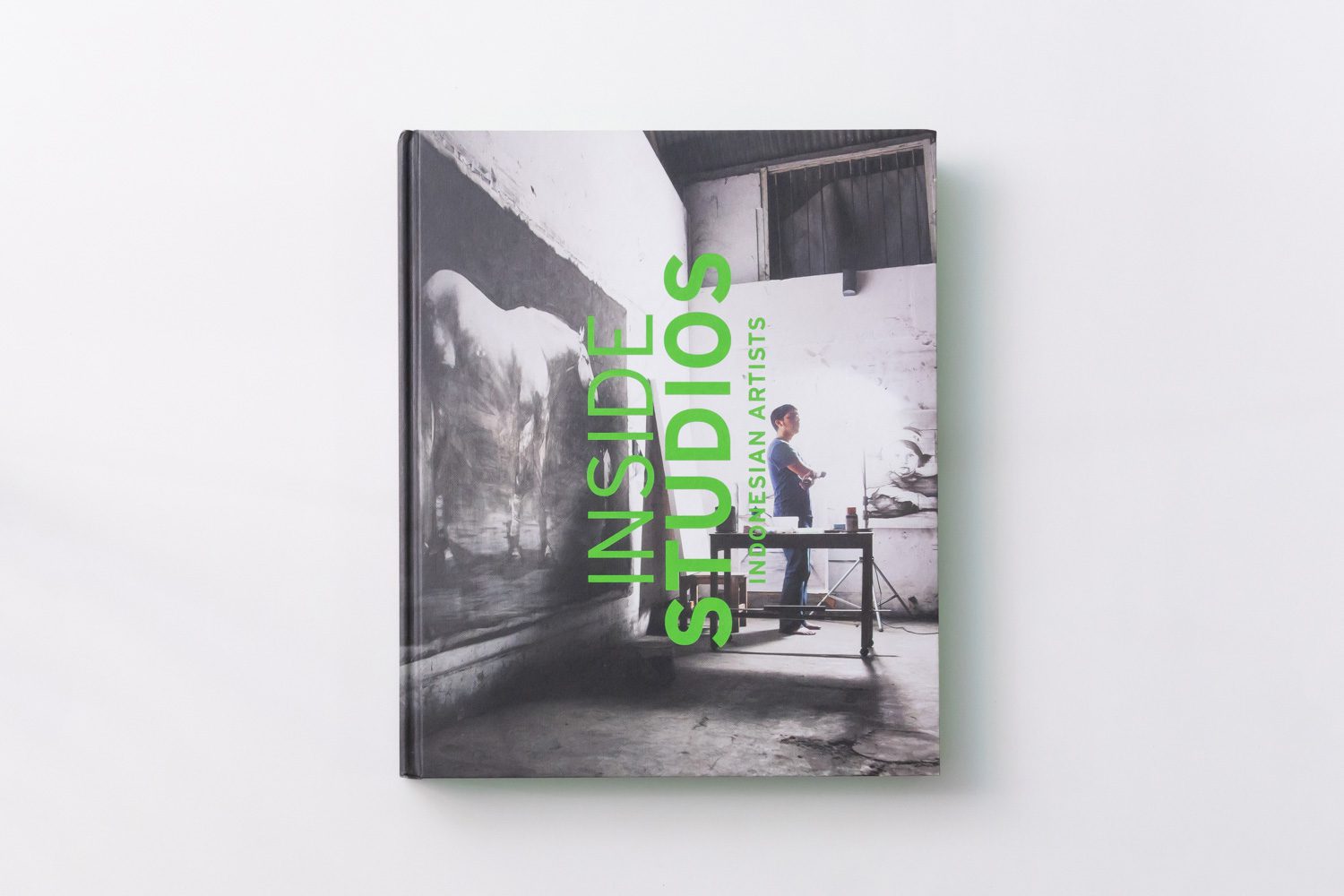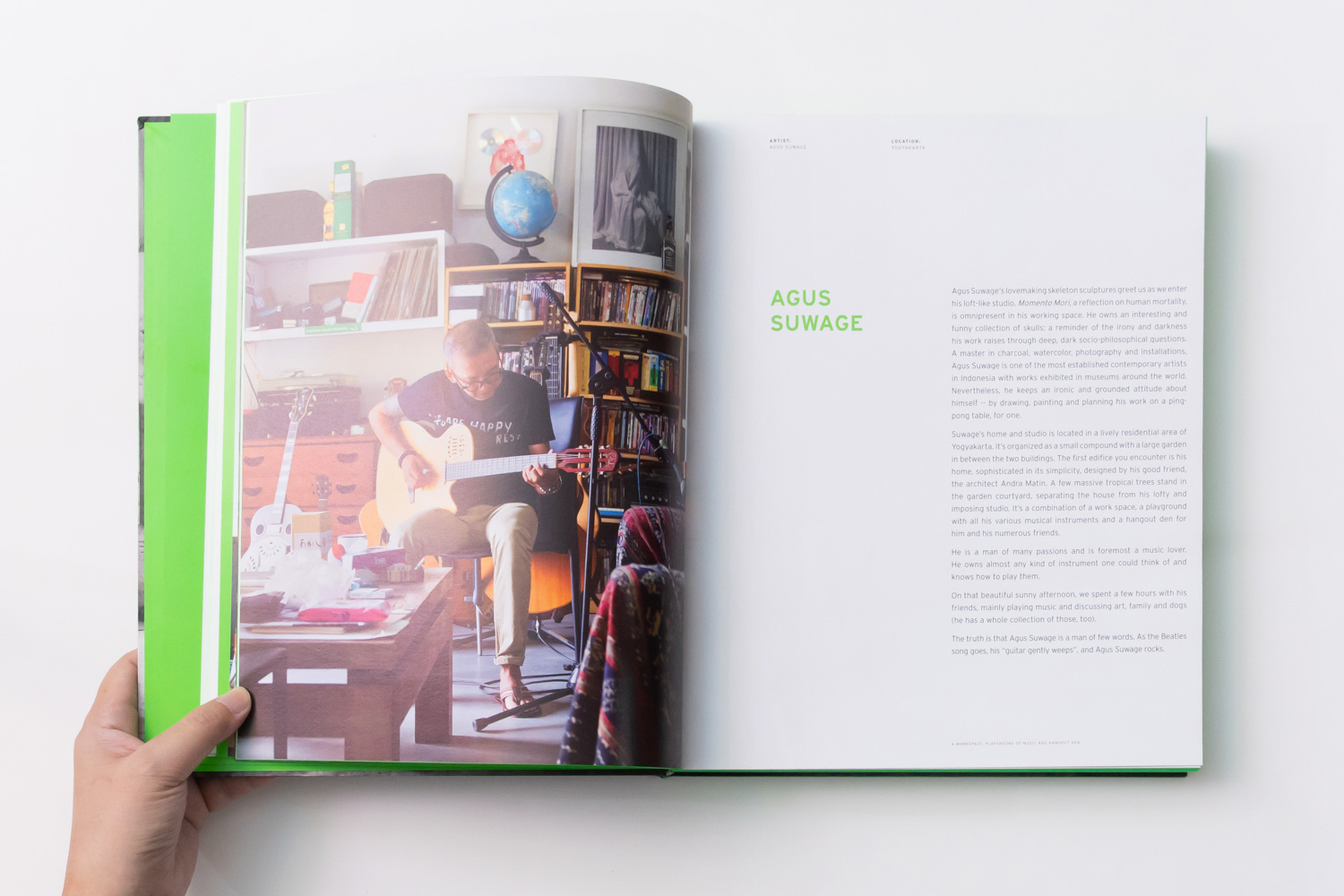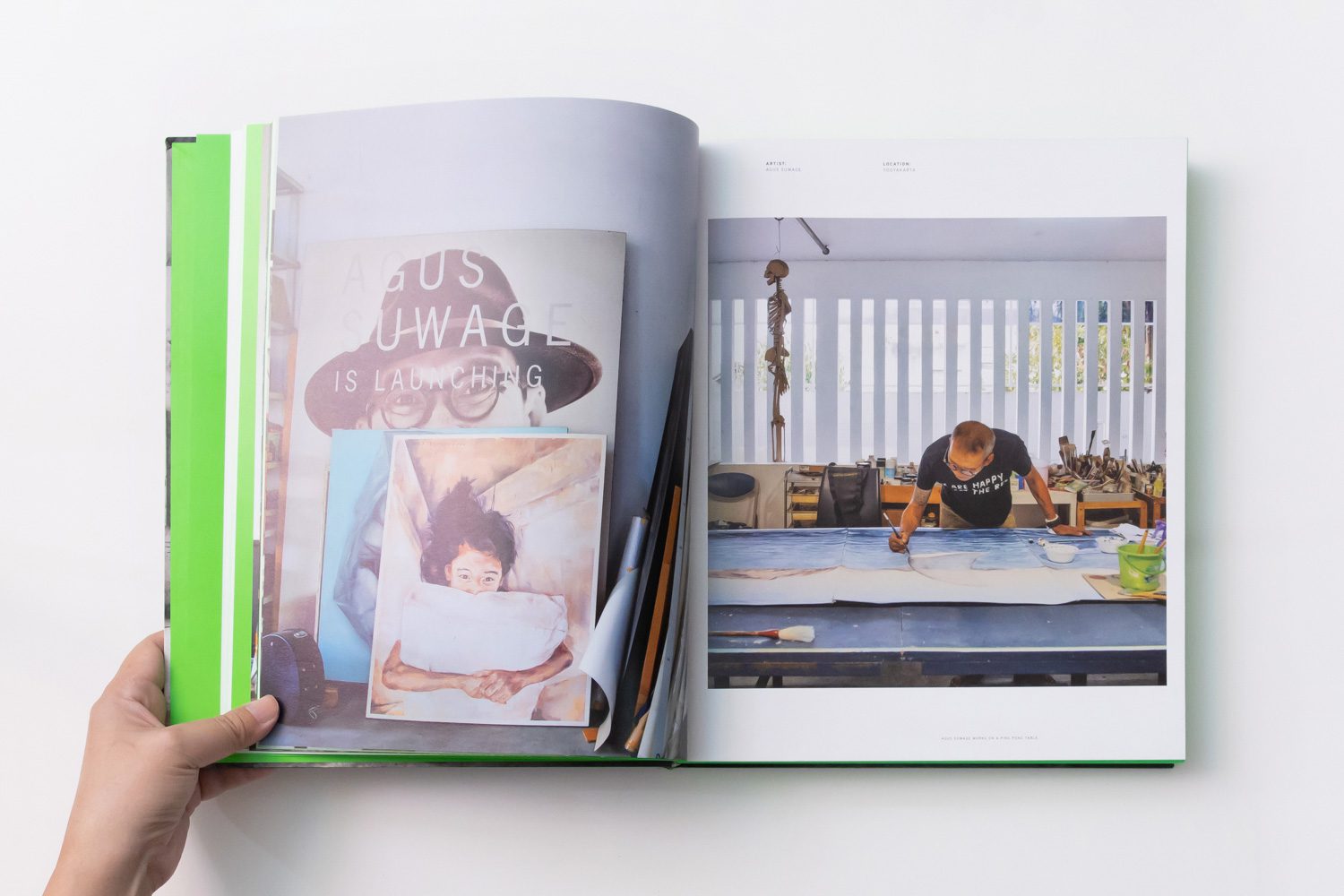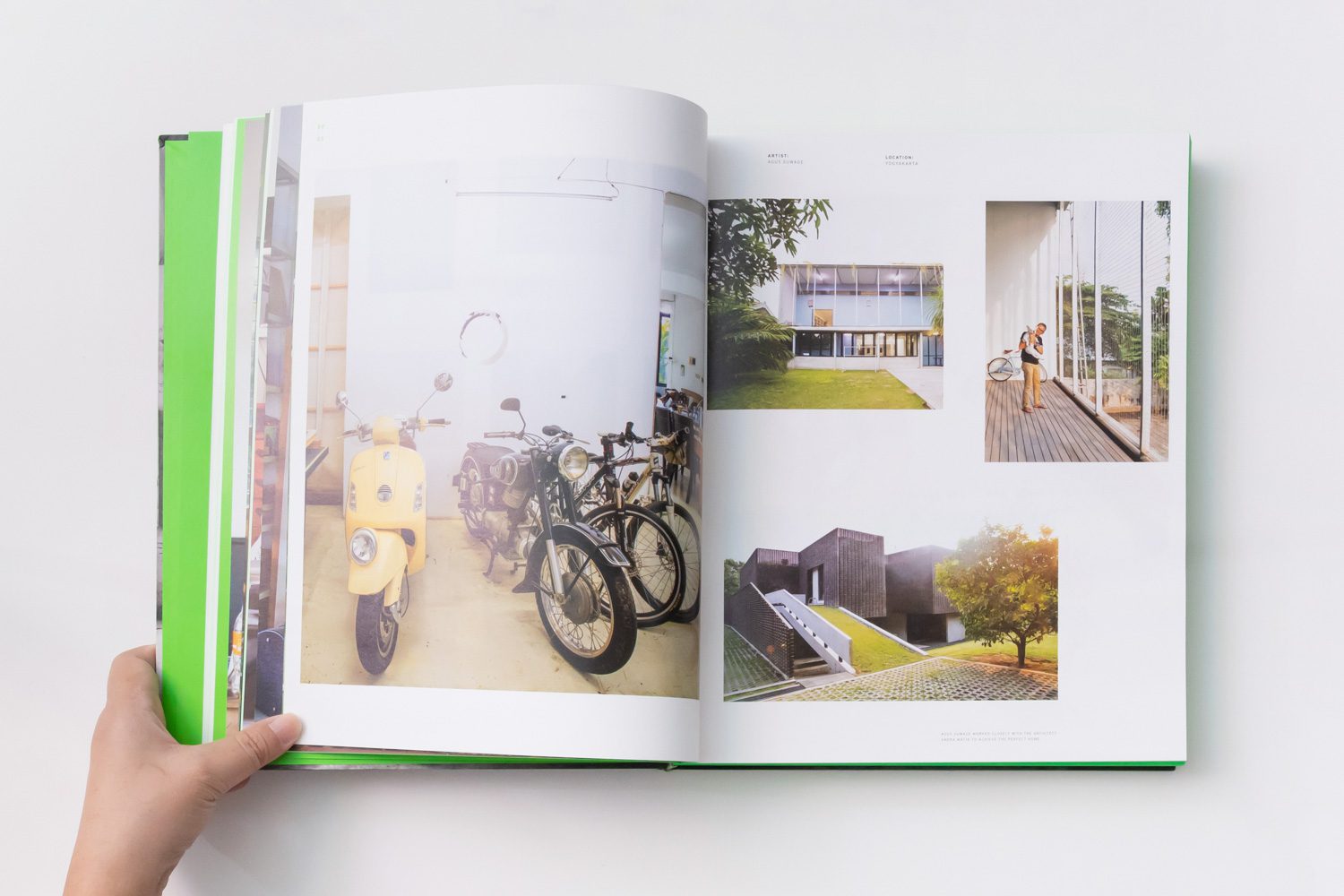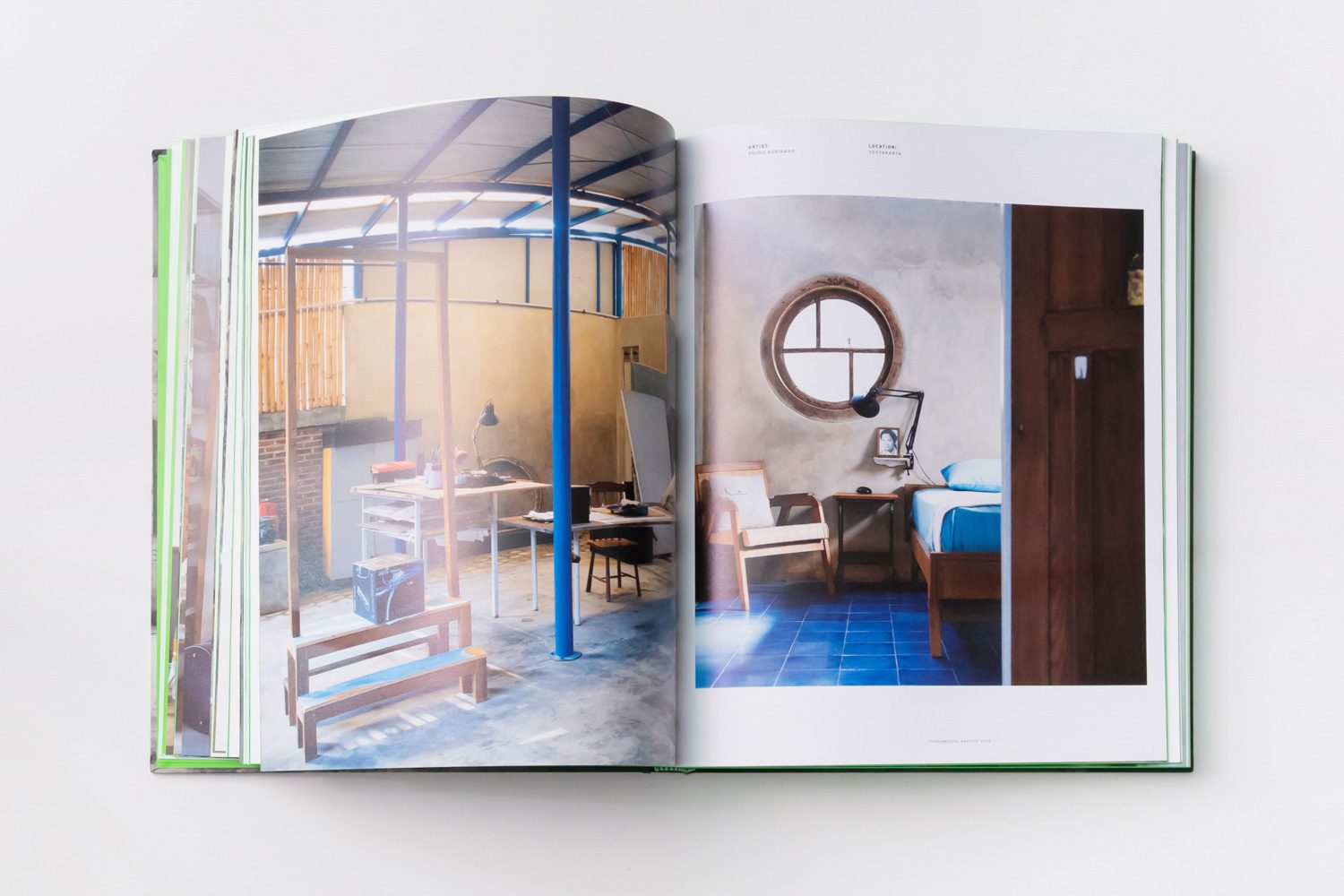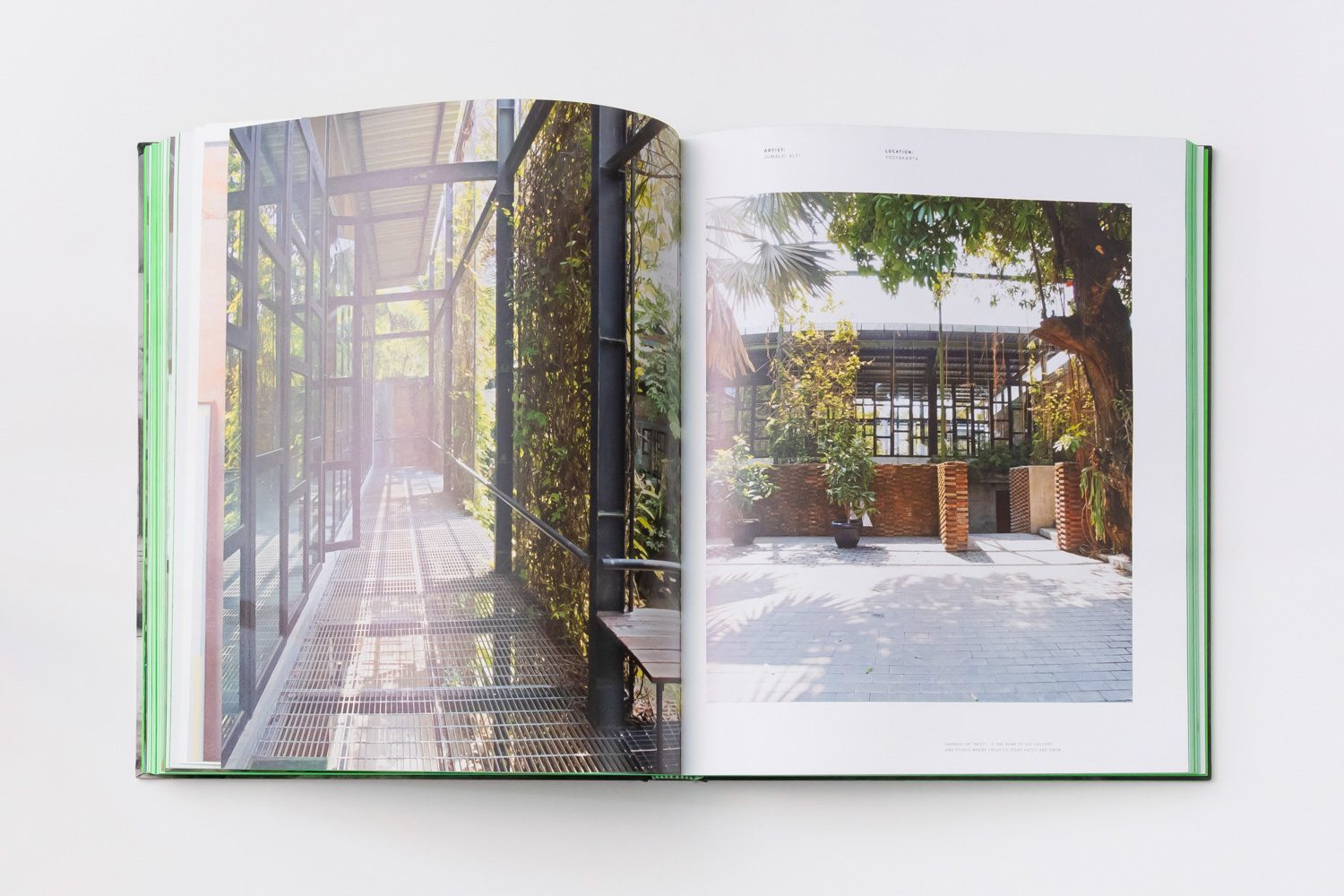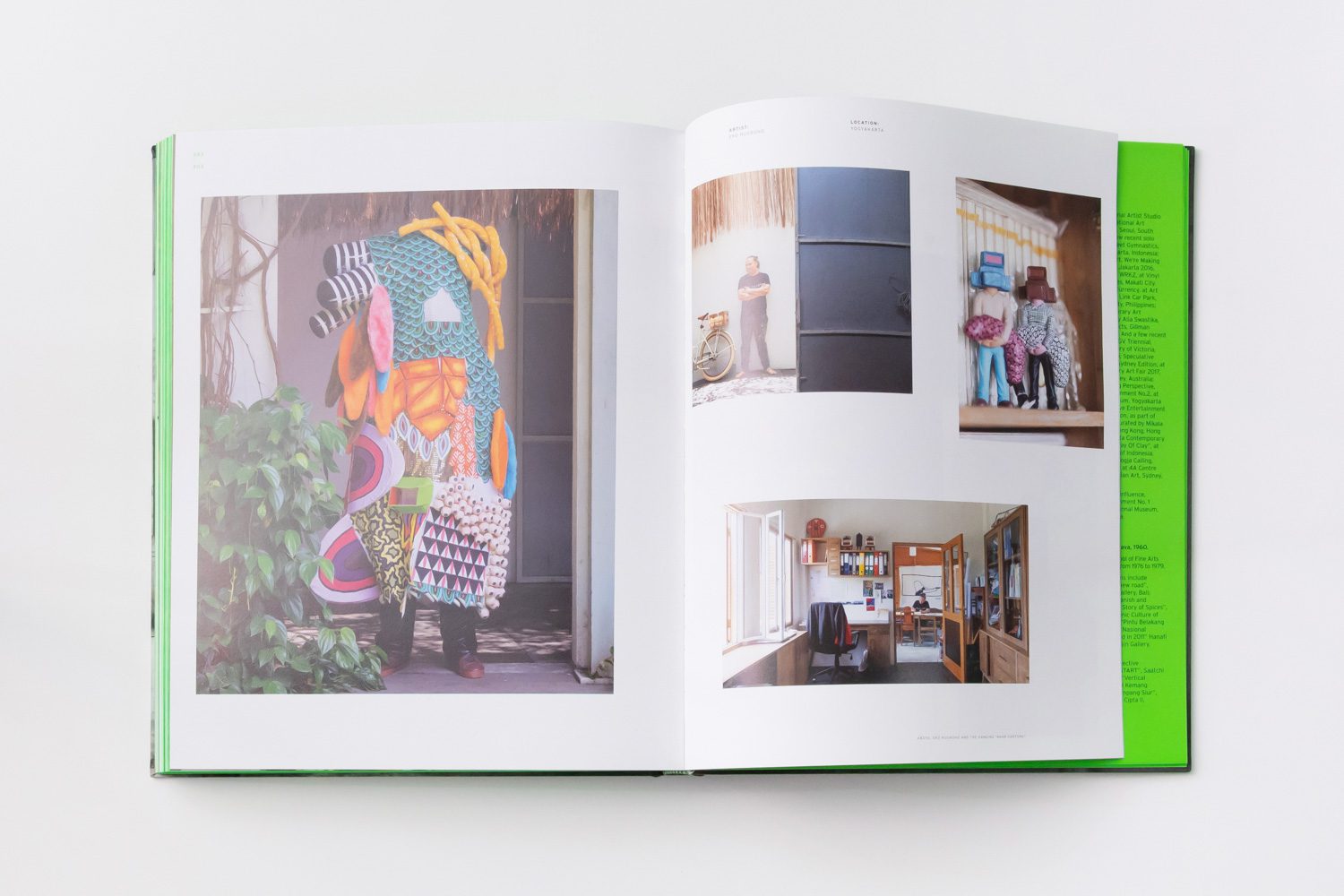A BOOK THAT KINDLY UNVEILS THE PERSONALITY OF 25 ARTISTS AND STUDIOS IN INDONESIA THROUGH PHOTOGRAPHS OF THEIR STUDIOS, THEIR TRIVIAL STUFF, AND A FUN Q&A SECTION WITH AN ARBITRARY ANSWER
TEXT: TUNYAPORN HONGTONG
PHOTO: KETSIREE WONGWAN
(For Thai, press here)
Author: Alexandra Corradini
Photography: Indra Leonardi
Art Director: Ignatius Hermawan Tanzil
Graphic Design: LeBoYe
Project Coordinator: Amalia Wirjono
Red & White Publishing (Jakarta, Indonesia), 2019
314 pages
Hardback
ISBN 978-6-026-20234-5
If you happen to visit Yogyakarta (a city on Indonesia’s Central Java Island with the nickname, Jogja) during the Biennale Jogja or Art Jog, not only will you notice art exhibitions being held in multiple designated main venues, but also galleries of all sizes throughout the city hosting exhibitions and activities in parallel to the event. The same is true for many artists who have opened their studios to curators, art collectors, the press, and art enthusiasts during this event. And if you happen to wander into a studio (most Indonesian artists are quite friendly and welcoming), you will almost certainly get the opportunity to learn more about the spaces where the art is created, from inception to completion, and a good glimpse into how each artist lives and works.
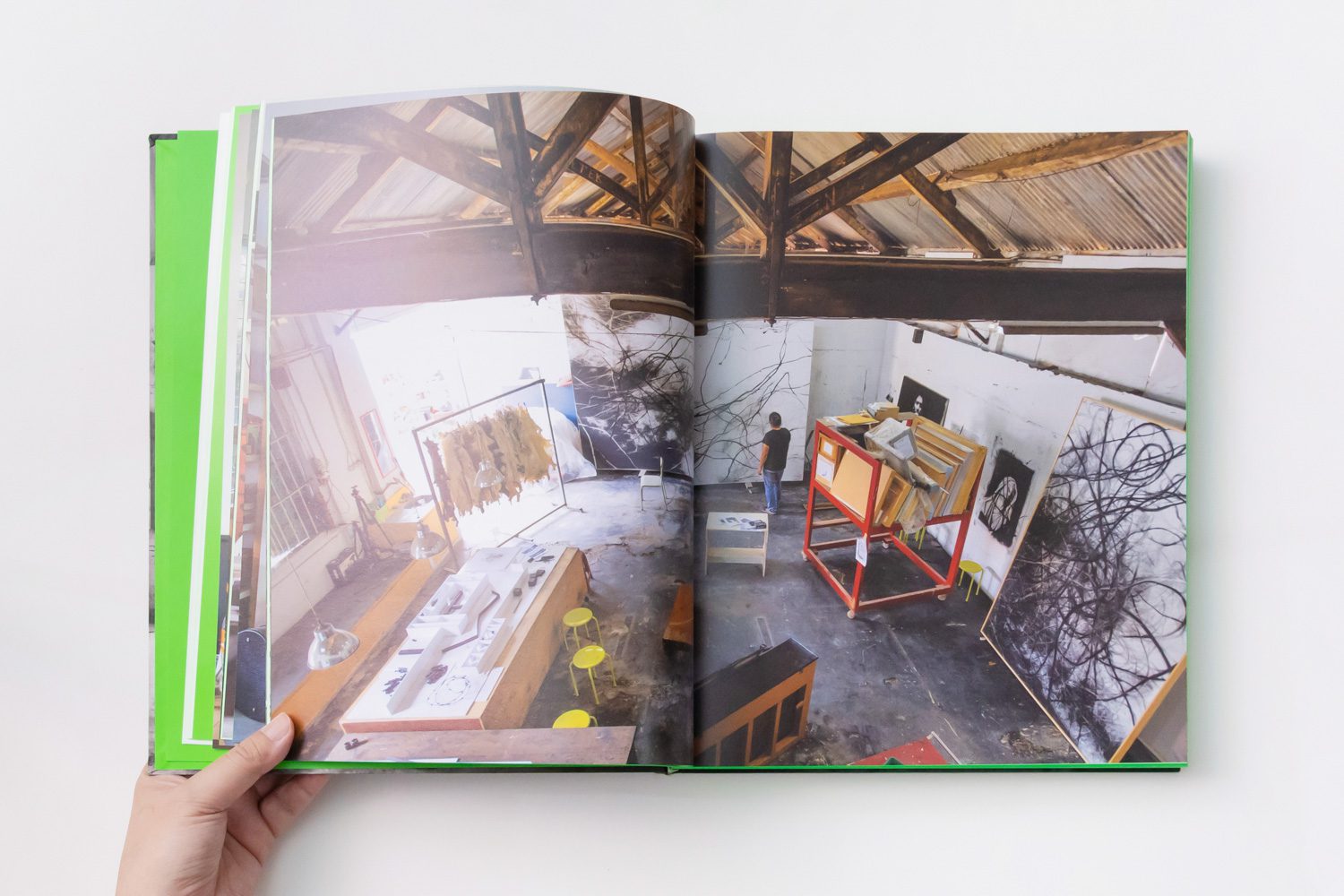
And these studio visits will definitely become the most enjoyable experience of your art trip.
The basic idea behind “Inside Studios: Indonesian Artists” is the same. The book takes readers on a journey through more personal aspects of artists. While the book’s content is less intense than the artists’ works and artistic notions, these personal anecdotes might help gain a deeper understanding of each artist’s life and work.

“Inside Studios: Indonesian Artists” features the stories and studios of 25 artists who were chosen based on three criteria: the artist must be Indonesian, have established international recognition, and still relevant today. Shortlisting Indonesian artists based on the criteria was challenging, not because they were hard to come across, but because there are so many artists who meet the requirements.
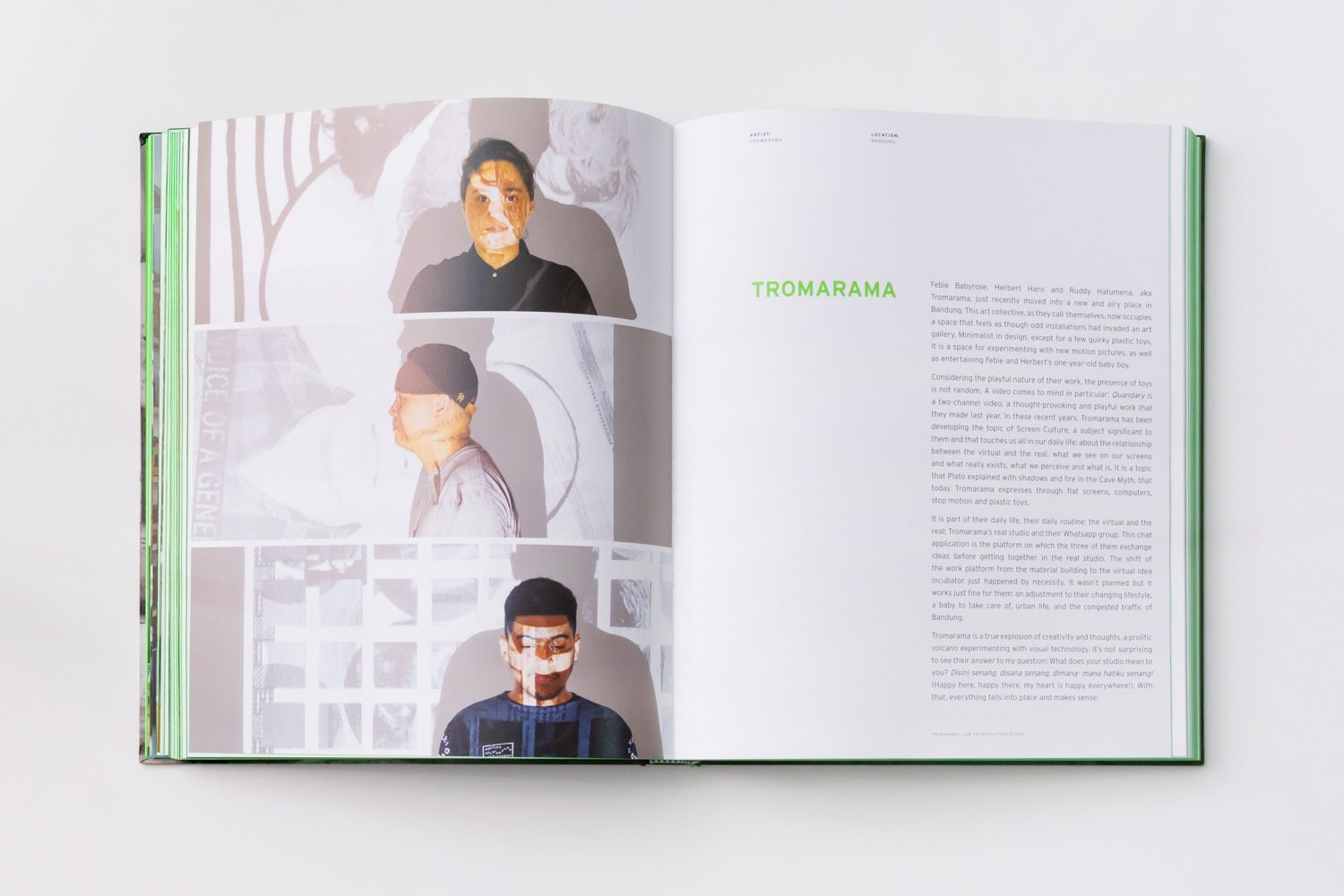
Yet, the book’s creator did come up with the final list, made up of great diversity from generations of artists, studio locations, and designs, as well as their styles of work. The artists included in the list range from Abdul Djalil Pirous, the book’s most seasoned artist, to Tromarama, a young and emerging art collective. Most of the studios are located in Yogyakarta (Indonesia’s art capital, which is home to large-scale sculpture artists such as Entang Wiharso and Handiwirman Saputra), Bandung (a town close to Jakarta where veteran artist Surnayo chose to be the home for his art studio and Selasar Sunaryo, the classic-looking gallery situated on the hill), and some other towns, such as Surakarta, which houses the studio of renowned performance artist Melati Suryodarmo.
The architecture of the studios are diverse too, such as Aditya Novali’s studio, which was converted from his family’s furniture factory, and Agus Suwage’s home and studio, designed by his close friend, Andra Matin.
The book presents the stories of the 25 artists and studios using the same format. It starts with a full-page or double-spread photograph of each artist’s studio and works, followed by text with some light reading on the author’s experience from each studio visit and encounter with the artist. A series of smaller images are arranged in a layout, providing a closer look into each studio through miscellaneous details such as everyday utensils, toys, collectibles, trees, bicycles, motorcycles, old photographs, shoes, tools and equipment used in the artistic process, medicine, and the work-in-progress pieces. Each chapter concludes with a fun Q&A section, which is very enjoyable to read, not only because of their sharp answers but each artist also chose to answer the questions in a variety of ways, from handwriting, doodles, paintings, collages, and even news photos taken from daily newspapers.

After finishing ‘Inside Studios: Indonesian Artists,’ I realized that Alexandra Corradini’s introduction statement, ‘all the miscellaneous details found in these artists’ studios, where they have spent the majority of their lives living and working, will allow us to know more about their views and sentiments way better than reading an academic text from intense art books,’ was spot on. Her observation on how, “We tend to forget in this digital age how much handwriting or a simple doodle can tell about a person,” is equally valid.
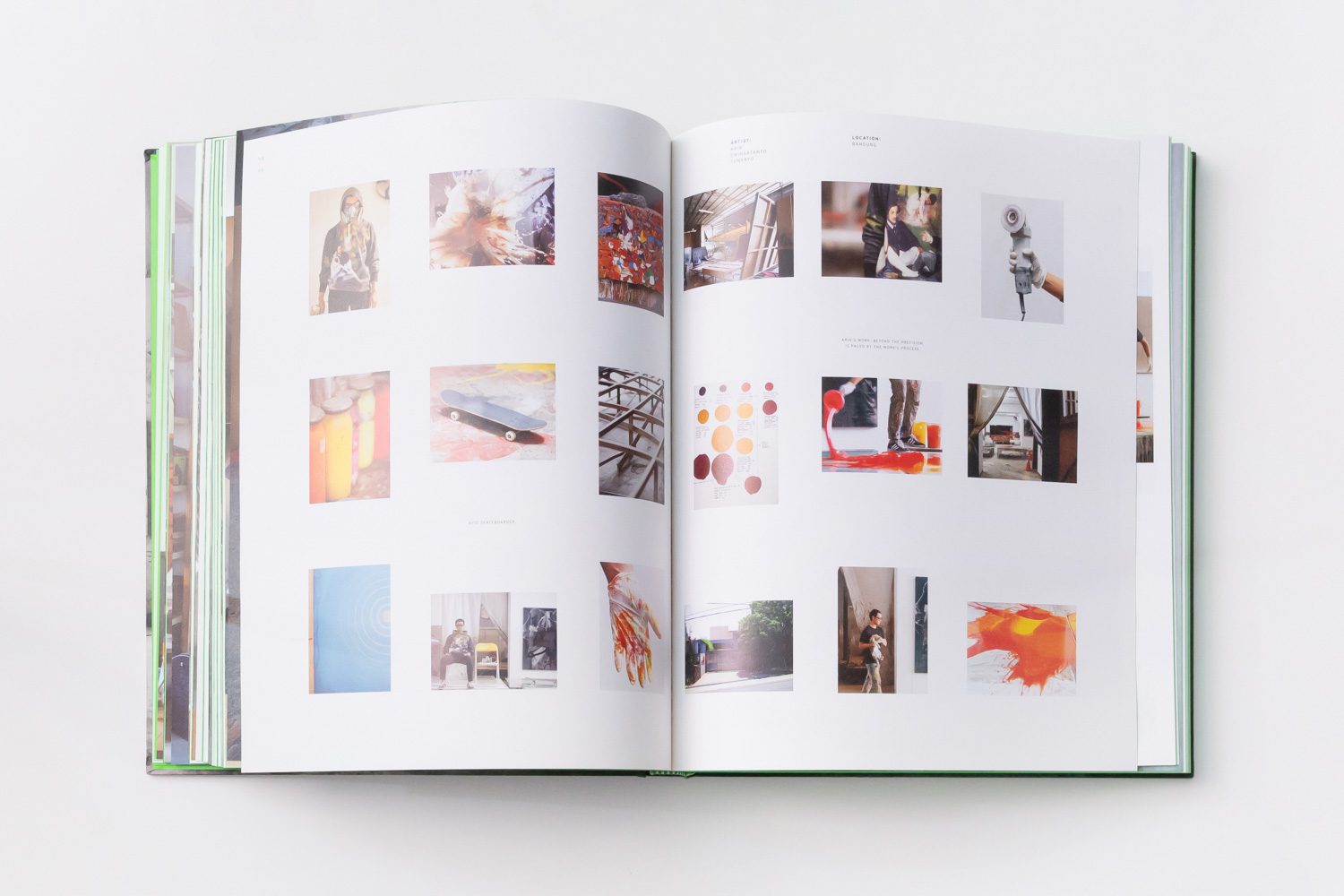
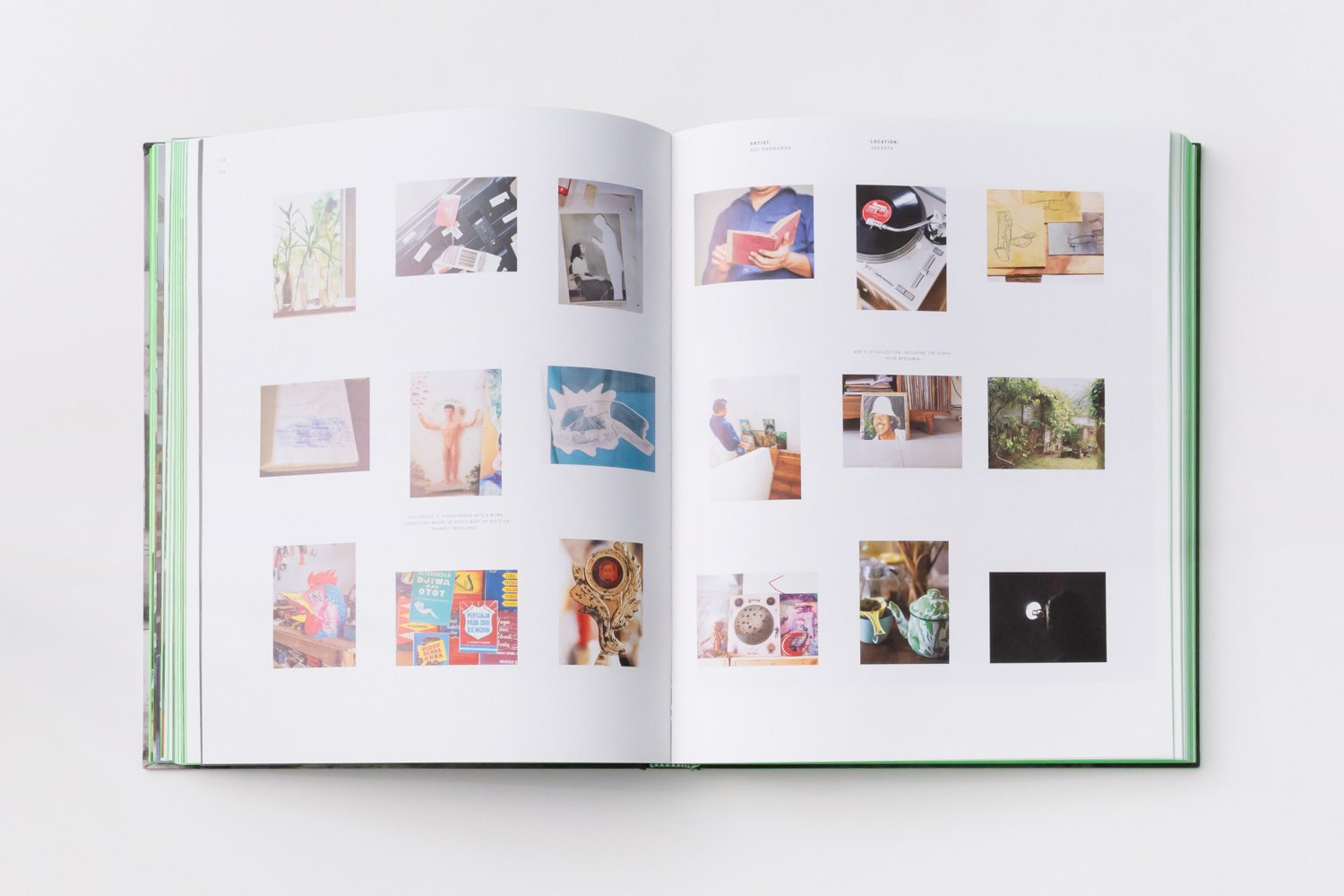
If an artist comes across this book and feels discouraged because of how nice the studios of these Indonesian artists look, keep this comment from Enin Supriyanto, curator and founder of Rubanah Underground Hub, in mind: “Certainly, before owning the studios that, for the most part, look wide and spacious, these artists had also struggled in studios that were modest in size and furnishings.”
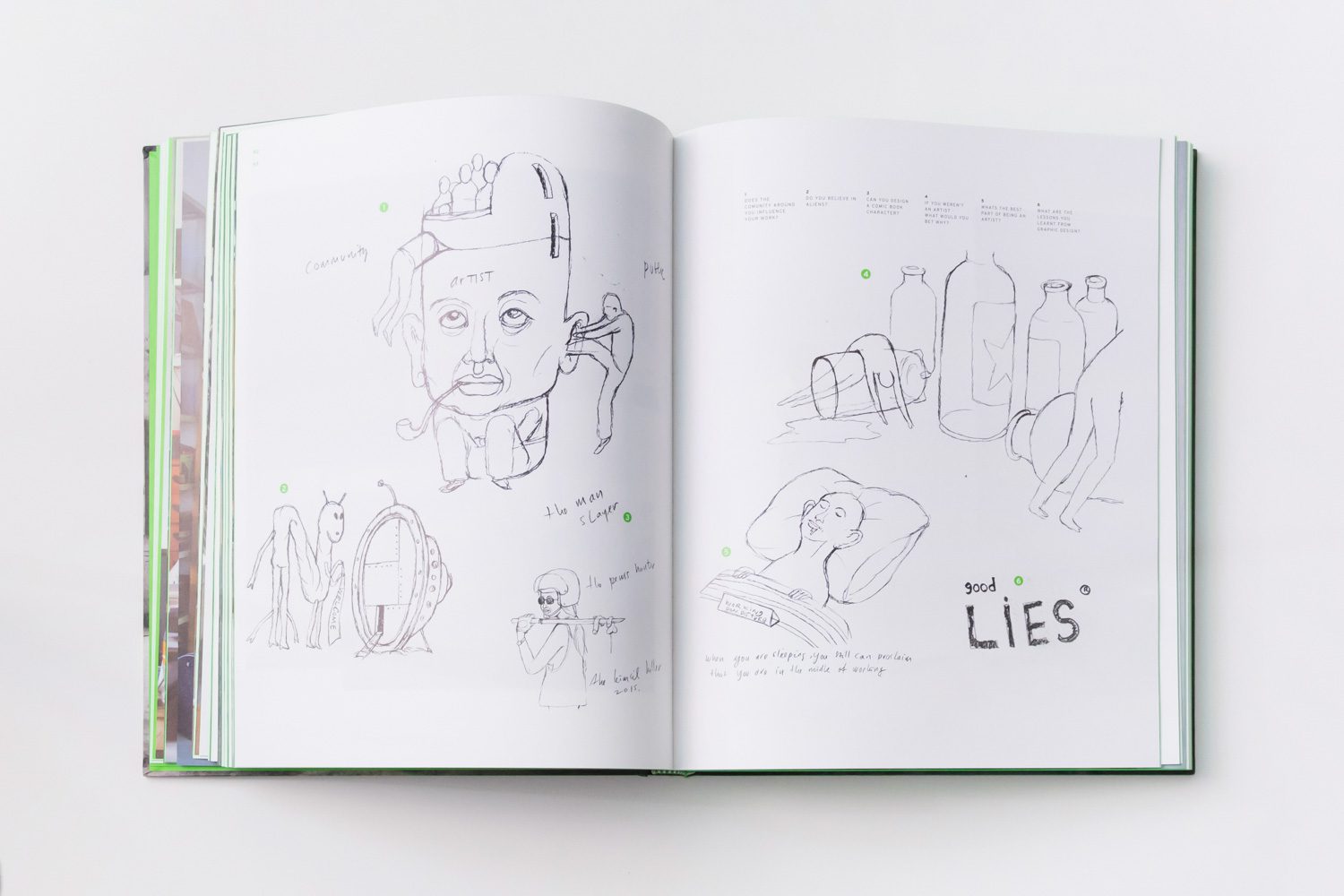

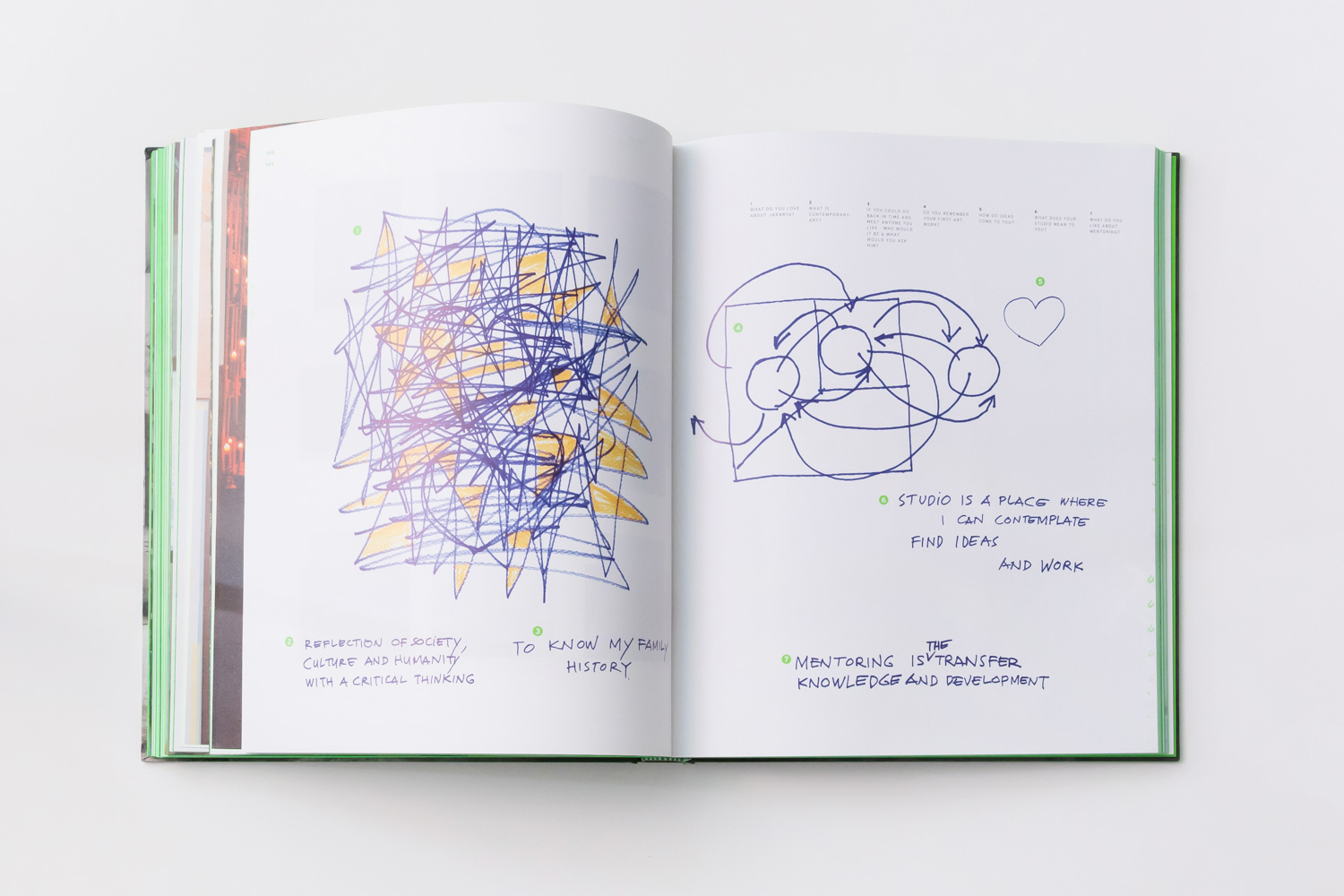
I say this because I don’t want anyone to think that this article is written to focus on how big or lovely these studios are. The true purpose behind this book review is for people to learn more about these 25 great artists and understand that before they’re at the point in their career where they now meet the criteria of the book, all these artists have gone through their own trials and tribulations, while art remains very much an inherent part of every fiber of their beings. The places in which they work and live are testaments to it all.


